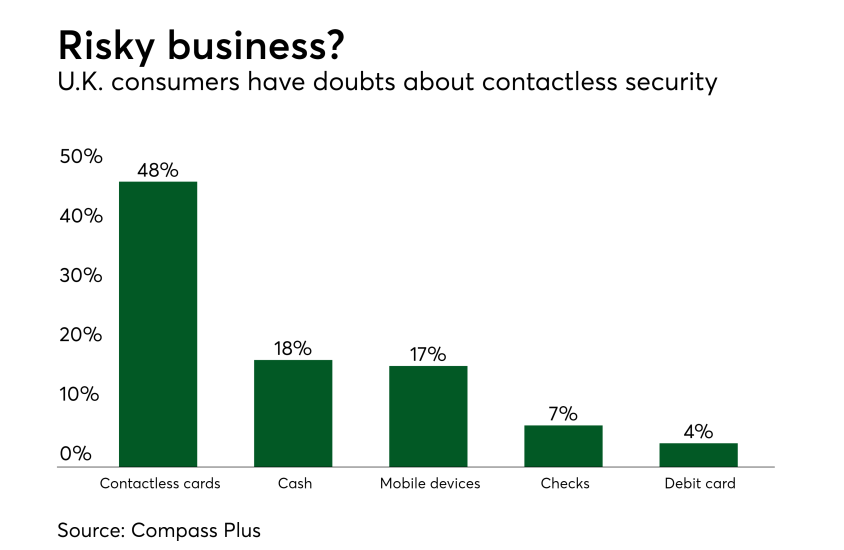Contactless payments are a big success story in most countries around the world—including developing markets—but not in the U.S.
NFC-enabled payments are still relatively rare in the U.S., despite a flurry of marketing activity from about
New data from Visa suggests contactless payments are nearing a global tipping point, with half of face-to-face transactions now conducted by tapping cards or mobile devices.
Visa predicts the U.S. will follow, but not anytime soon. “Given these factors and overall momentum, we expect contactless adoption will continue to grow around the world, including in the U.S. over the next few years,” said Dan Sanford, Visa vice president for consumer products.










